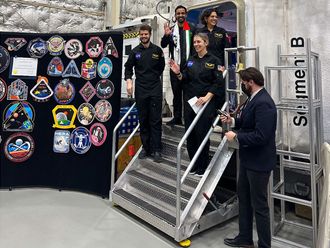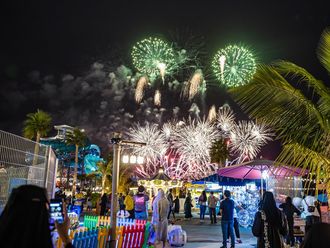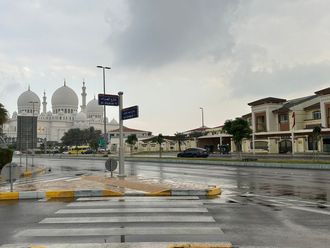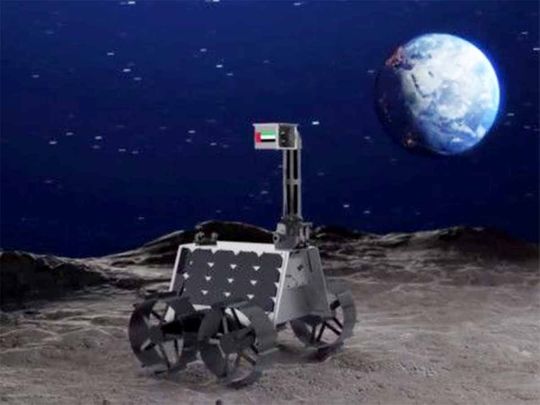
Dubai: In what is a huge feat ahead of the 51st UAE National Day, Emirati-made Rashid Rover will shoot to the Moon on Wednesday, November 30, at 12.39pm (Gulf Standard Time), carrying with it the pride and dreams of the UAE — and the entire Arab world.
From the desert dunes of the UAE to the soil of the Moon, the lunar rover — named after the late Sheikh Rashid bin Saeed Al Maktoum, builder of modern Dubai — will give mankind and the global scientific community more knowledge about Earth’s closest celestial neighbour.
It will land on Atlas Crater, located at 47.5°N, 44.4°E on the Moon’s southeastern outer edge of Mare Frigoris (Sea of Cold), and from there capture photos and collect information of the unexplored crater area and the vast basins on Moon’s surface that were formed billions of years ago.
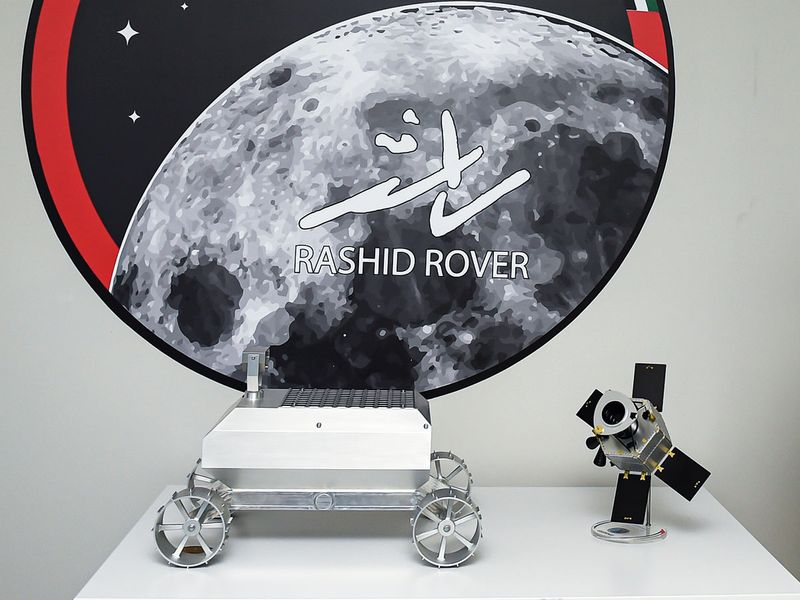
The UAE’s moonshot has lofty goals. According to Mohammed Bin Rashid Space Centre (MBRSC),“Rashid Rover will provide about 10 gigabytes of recorded material, scientific data and new images to the global scientific community to study the Moon.”
In particular, Rashid Rover will study the characteristics of lunar soil, the petrography (composition and properties of lunar rocks) and geology of the Moon. It will also take photos of the moon’s dust movement, surface plasma conditions, and the lunar regolith (blanket of superficial deposits covering solid rocks).
Rashid Rover will help scientists better understand how lunar dust and rocks vary across the Moon. It will also provide fresh data for the development of new technologies that can be used to unravel the origins of the Earth and our solar system.
The success of the first Emirates Lunar Mission (ELM) will make the UAE the first Arab country and among the first countries in the world to land a spacecraft on the Moon, after the United States, former Soviet Union and China.
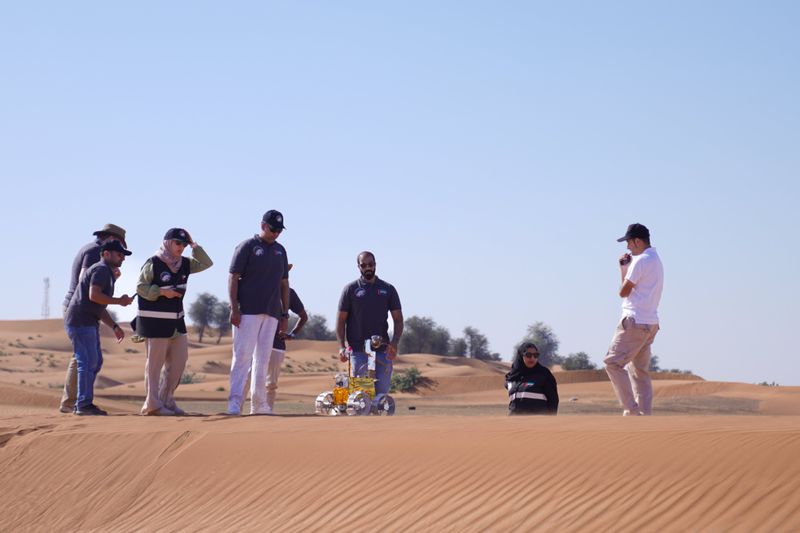
MBRSC underlined: “The mission embodies the aspirations of the UAE. Rashid Rover will collect images and information that will allow the UAE to conduct comprehensive and integrated studies on how to build human settlement on the Moon, prepare for future missions to study Mars and provide the scientific community with answers about the solar system and other planets.”
Before lift-off, let us look back at the timeline, technical specifications, instruments, functionalities and other important details of the Emirati-made Rashid Rover.
Two years ahead
His Highness Sheikh Mohammed bin Rashid Al Maktoum, Vice-President and Prime Minister of the UAE and Ruler of Dubai, first announced Rashid Rover in September 2020, and the original goal was to land it on the Moon by 2024.
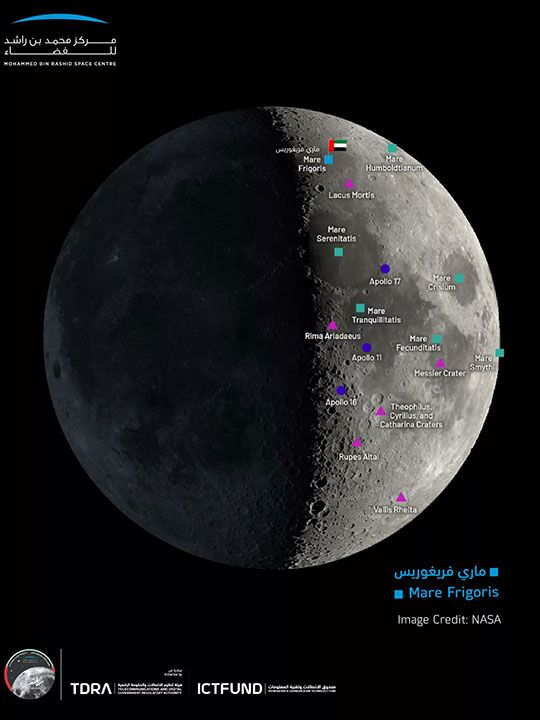
In April 2021, MBRSC signed a contract with ispace, inc., a Japanese private lunar robotic exploration company, to transport Rashid Rover to the Moon aboard Hakuto-R M1 (mission 1) lander. Under the terms of the agreement, ispace will also provide wired communication and power during the cruise phase and engage in wireless communication on the lunar surface.
Launch date
Lift-off is on Wednesday, November 30, at 12.39pm (Gulf Standard Time) from Space Launch Complex 40 at Cape Canaveral Space Force Station in Florida, USA, on a SpaceX Falcon 9 rocket. But the date and time are subject to change, depending on weather and other conditions at launch, according to MBRSC.
Hakuto-R M1, which means ‘white rabbit’ in Japanese (it is said a white rabbit lives on the Moon, according to Japanese folklore), will also carry other payloads, including a transformable lunar robot from Japan Aerospace Exploration Agency; a test module for a solid-state battery from NGK Spark Plug Co., Ltd., an artificial intelligence (AI) flight computer from Mission Control Space Services Inc., a multiple 360-degree camera from Canadensys Aerospace, a panel engraved with the names of Hakuto crowdfunding supporters, and a music disc containing the song ‘Sorato’ played by Japanese rock band Sakanaction.
Fuel-saving route
Once launched, the integrated spacecraft Hakuto-R M1 that will carry Rashid Rover and other payload to the Moon will take a low-energy route to the Moon rather than a direct approach. This means the landing on the Moon will take about five months after launch, in April 2023.
Dr Hamad Al Marzooqi, project manager of Emirates Lunar Mission at MBRSC, told Gulf News the rationale for the fuel-saving but long route. He said: “The main factor is the cost of the mission. The cost comes from the volume and mass of the spacecraft. In order to reach to the moon within six days – which is the shortest path – you would need to burn a lot of fuel which means that you need a big tank and a big propulsion system to do that.”
“But it will have a huge impact in cost so, in order to reduce the cost of the mission, ispace (our partner) has selected their approach that they can reach to the lunar surface within five months but it will be less costly because it will burn much less fuel. They will use a smaller tank and propulsion system, therefore the launch cost and the cost of developing the developing system will be lower,” he further explained.
Dimitra Atri, astrophysicist at New York University in Abu Dhabi, added: “In order to keep the prices of payload delivery attractive to customers, private companies reduce their expenses by choosing the lower cost option, which consumes less energy but takes much longer.”
Fully-automated landing
SpaceX Falcon 9 rocket will take Hakuto-R M1 into the Moon’s orbit, and following its successful separation from the launch vehicle (rocket), Hakuto-R M1 will use the gravitational pull of the Earth and sun to guide it to the moon.
As it gets closer to the lunar surface, the Japanese-made lander will first orbit the moon with an increasingly elliptical trajectory, before angling itself vertically to softly land on the moon and perform a fully-automated landing.
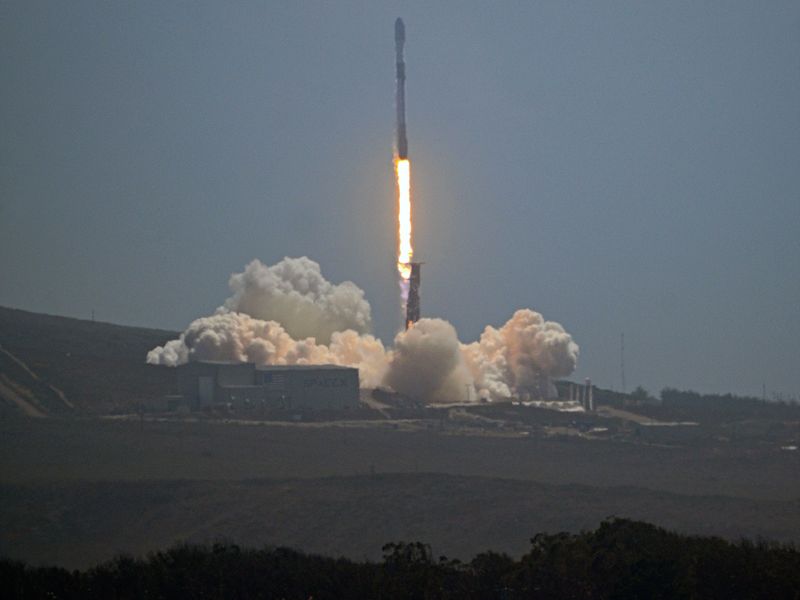
Hakuto-R M1 will then establish a steady telecommunication and power supply on the lunar surface after landing to support customer payload’s surface operations, including that of the UAE’s Rashid Rover.
Landing site
MBRSC confirmed Atlas Crater, located at 47.5°N, 44.4°E on the moon’s southeastern outer edge of Mare Frigoris (“Sea of Cold”), as Rashid Rover’s landing site.
MBRSC explained: “It was chosen to maintain flexibility during operations. Mare Frigoris lies in the far lunar north. The primary landing site was chosen along with multiple contingencies, which may be used depending on variables that occur during transit. The site meets the technical specifications of the lander technology demonstration mission and the scientific exploration objectives for the ELM mission.”
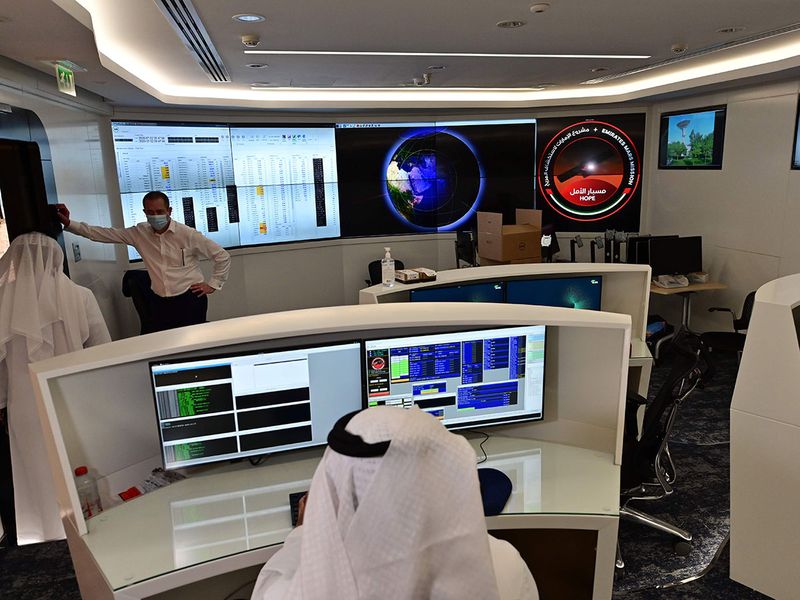
Atlas Crater has a diameter of 88 kilometres, and believer to have been formed between 3.2 to 3.8 billion years ago. It is circular in shape and bounded by an intricately terraced rim wall. The crater is 2km deep and has a complex floor covered in hills and cracks.
Aside from Atlas Crater, alternative landing targets – according to ispace – include Lacus Somniorum, Sinus Iridium and Oceanus Procellarum, among others.
Compact rover
Designed and developed fully by an Emirati team, Rashid Rover is touted as the world’s most compact rover that could land on the Moon. Its height is 70cm, length is 50cm and width is 50cm. Its weight is approximately 10kg with payload, but it can climb over an obstacle up to 10cm tall and descend a 20-degree slope.
Because Rashid Rover has been delivered well ahead of the original 2024 deadline, building it required rapid prototyping. According to Al Marqoozi, engineers at MBRSC “went through five modules until they reached with the one” that will be launched on November 30.
Advanced cameras
The four-wheeled Rashid Rover has 3D cameras, advanced motion system, sensors, and communication system that are powered by solar panels. There are four cameras that move vertically and horizontally, including two main cameras, which are Caspex (camera for space exploration) that can withstand vibrations during launch and landing
MBRSC has partnered with French space agency CNES (National Centre for Space Studies) for the two Caspex that will be used analyse the properties of lunar soil, dust, radioactivity, electrical activities, as well as the rocks on the moon surface. One Caspex is installed on top of the rover’s mast to provide panoramic visibility of its surroundings while the rear-mounted CASPEX camera will deliver images of the lunar soil with high spatial resolution.
“Rashid Rover’s drive tracks will be analysed to determine wheel sinkage and to investigate the detailed wheel-soil interaction. Such data will be important to design the mobility systems of future rovers,” MBRSC noted.
Mission period
Rashid Rover will study the Moon’s surroundings for one lunar day, which is equivalent to 14 days on Earth. But there is a chance Rashid Rover’s mission can be extended to another lunar day. Al Marzooqi earlier explained: “After the first lunar day the rover will go into a hibernation or mode sleep during the (lunar) night (which is also equivalent to 14 Earth nights) until the sun rises again and the temperature on the rover surface starts to rise again. And by that time, the team will try to “wake up” Rashid Rover to see if its systems were able to survive the low temperatures and ready for the second lunar day.
The Moon’s environment, however, is very harsh. The temperature drops to as low as negative 173 degrees Celsius, from as high as 127 degrees Celsius, when sunlight hits the Moon’s surface. But Rashid Rover is equipped with the latest technologies that can resist the lunar surface temperature.
To the Moon and back
Rashid Rover will not return to Earth. It’s a one-way flight and there is no transport that will bring back Rashid Rover and Hakuto-R. What Rashid Rover will bring back to Earth are multiple images – around 10 gigabytes of recorded material and scientific data. The ELM team at MBRSC will use these to test new technologies in material science, robotics, mobility, navigation and communications. The findings will also help in the design of future missions to survive and function in harsh space environment.
Rashid Rover is just the first of the UAE’s multiple missions to the Moon. A couple of months ago, in September, MBRSC signed an agreement with China National Space Administration (CNSA) to kickstart joint space projects and future lunar exploration, including sending the next UAE rover aboard Chang’e 7, a robotic Chinese lunar exploration mission expected to be launched in 2026 to target the Moon’s south pole.




